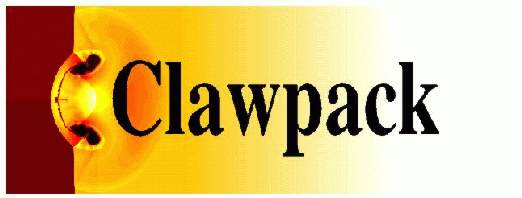|
getlegendinfo.m.html |
 |
|
Source file: getlegendinfo.m
|
|
Directory: /home/rjl/git/rjleveque/clawpack-4.x/matlab
|
|
Converted: Sun May 15 2011 at 19:15:56
using clawcode2html
|
|
This documentation file will
not reflect any later changes in the source file.
|
function [level_handles,level_labels_out] = getlegendinfo;
% GETLEGENDINFO returns line plot info for creating legends.
%
% [H,LABELS] = GETLEGENDINFO returns a vector of handles to the line
% plots created by PLOTCLAW1, PLOTCLAW2 and PLOTCLAW3. The handles are
% in the vector H and optional labels are in the cell matrix
% LABELS. This information can be passed directly to the Matlab LEGEND
% command to add legends to your plots. Additionally, this information
% can be combined with other line plots you may add to the plot (1d
% reference solutions, for example) to further describe your plot.
%
% When you pass this data to the LEGEND command, the symbols you
% set in ScatterStyle, PlotStyle, or LineStyle will be correctly
% displayed on the legend.
%
% The strings return in LABELS are default strings 'Level 1', 'Level 2'
% and so on.
%
% H = GETLEGENDINFO returns the vector of handles only. The user can
% then supply their own labels for the line plots created by Clawpack graphics.
%
% Example :
%
% % AFTERFRAME file for a scatter plot of AMR data :
% [h_amr, labels_amr] = getlegendinfo;
% % Use default labels in 'Level 1','Level 2','Level 3', etc.
% legend(h_amr,labels_amr);
%
% Example :
%
% % AFTERFRAME file for a scatter plot of AMR data :
% h_amr = getlegendinfo;
% % Create your own labels
% legend(h_amr,{'My Level 1', 'My Level 2', 'My Level 3'});
%
% Example :
%
% % AFTERFRAME file for a scatter plot of AMR data :
% % Add 1d reference solution line plot to legend
% [data1d,tref] = readamrdata(1,Frame,'./qref/');
% [qref,xref,p] = plotframe1ez(data1d,mq);
% [h_amr,labels_amr] = getlegendinfo;
% legend([h_amr,p],{labels_amr{:},'1d reference solution'});
%
% See Also LEGEND, CELL, PAREN.
amrlines = get_lines;
level_handles = [];
level_labels = {};
for level = 1:length(amrlines),
svec = amrlines{level};
if (~isempty(svec))
level_labels{level} = sprintf('Level %d',level);
level_handles(level) = svec(1);
end;
end;
if (nargout == 2)
level_labels_out = level_labels;
end;

